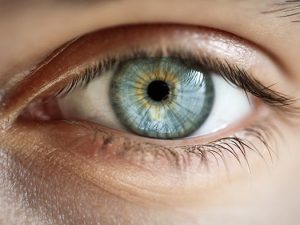A bibliographic review on dry eye syndrome was carried out, including its classification, diagnosis, and treatment. It was taken into account that it constitutes a frequent entity in Ophthalmology; It is presented to show the syndrome in an up-to-date way and to facilitate its management
In ancient times, dry eye was only diagnosed when the dryness of the ocular surface was macroscopically noticeable. In the time of Hippocrates, the term xerophthalmia (in Greek, dry eye) was applied only to those who had an absolute dryness of the ocular surface with corneal blindness.1 However, throughout history, these concepts have changed until the Currently, it is proposed that dry eye syndrome (SOS) is a chronic inflammation mediated by the immunity of multifactorial origin that affects the functional unit of the lacrimal gland and leads to a loss of the physiological parameters of the tear film and the ocular surface. Any disruption of the functional unit produces irritation and inflammation of the ocular surface and therefore signs of dry eye.2,3
SOS can directly affect the lacrimal gland, the meibomian glands or cause inflammation of the ocular surface. Antiandrogen therapies, aging, androgen insensitivity disorders affect the lacrimal gland and the meibomian glands. Autoimmune disorders affect the lacrimal gland. Contact lenses, allergies, infections, and LASIK directly affect the ocular surface.2,3
Given the high frequency with which this entity occurs, a review of the subject is carried out to show the syndrome in an updated way and to facilitate its management.
PREVENTIVE LEGISLATION AND ACTIONS OF THE WORKPLACE DOCTOR IN DRY EYE SYNDROME
Specific health surveillance (VSE) is the main preventive tool and involves the assessment of work aptitude without forgetting the functions of early detection, diagnosis, and treatment of dry eyes. From a clinical point of view, SOS is not usually a serious pathology; However, the occupational doctor must refer the worker for study and treatment by the ophthalmologist: when there is a history of previous eye disease or is already under treatment, if there was ocular trauma or use of contact lenses, if red eye associated with a decrease in visual acuity, if the discomfort does not subside after instillation of Fluotest, when corneal opacities, corneal neovascularization, effacement of lacunar folds, symblepharon, in the presence of irregular or asymmetric pupils or altered pupillary reflex, in periorbital pain or periqueratic red eye, if the existence of glaucoma, keratitis, uveitis, scleritis or orbital cellulitis is suspected, or if there is no response to established treatment. Dry eye syndrome (SOS) is the most common of the various eye diseases that can affect workers.
On the Prevention of Occupational Risks (LPRL) 17 and its implementing regulations, determine the functions to be carried out by the Occupational Physician to achieve adequate care for workers against the risks inherent in their work. In article 22 of the LPRL and in section 3 of Article 37 of RD 39/199718, which approves the Regulation of Prevention Services in Spain, the functions of surveillance and control of workers’ health are specified by health personnel with technical competence, training, and accredited capacity.
The VSE, based on the risks inherent to the work, is the basic preventive tool from the Occupational Medicine aspect, through the application of protocols, 19 with the use of those necessary at all times depending on the risk or risks of its activity, and is and is carried out in its different modalities: initial evaluation of the health of workers after incorporation to work or after assigning tasks that involve new risks, periodic health examinations depending on the specific risk to which they are exposed the worker and evaluation of the health of workers who resume their work after prolonged absences for health reasons, among others.
Concerning some of the labor factors most frequently related to the appearance of SOS, the VSE protocols of PVD users (defined by the Royal Decree of Spain 488/199720), ionizing radiation, chemical agents, and dermatoses stand out. In any case, the occupational medical history should include – in addition to individual risk factors of the workers (general state of health, ocular alterations, poorly corrected refractive defects, accommodation disorders, convergence insufficiency, oculomotor problems, allergies or dry syndromes, use of lenticontact lines, etc.) – work factors such as ergonomics related to the performance of the task, especially the position of the eyes in front of the monitor, which can lead to an increase in the opening of the palpebral fissure and a reduction in the number of blinks, with subsequent desiccation of the ocular surface and the development of the so-called idiopathic display screen syndrome (LPS).
Ages
From the age of 30, tear secretion begins to decrease, until approximately over the age of 60, there are moments of dry eyes in certain circumstances (when wearing contact lenses; when entering under the action of air conditioning; at night, when the rhythm circadian reduces tear production to a minimum, etc. Age dry eye is usually mild or medium (grades 1 or 2).
Hormonal
Castration, antiandrogen treatment, aging, hypogonadism, oophorectomy, climacteric, postmenopause, estrogenic contraceptives, and lactation.
Pharmacological
Anxiolytics, antidepressants, sleeping pills and hypnotics, antiparkinsonians, antihistamines, anticholinergics, arterial antihypertensives, diuretics, etc.
Topical anesthetics (tetracaine, proparacaine, cocaine, lidocaine) or eye drop preservatives (benzalkonium chloride, EDTA, thiomersal, chlorobutanol) cause epitheliopathies that are manifested by conjunctive-corneal dryness.
Pharmacological dry eye is usually medium or moderate (grades 1 or 2).
Immunopathol
Sjögren’s syndromes type I and II, cicatricial ocular pemphigoid, Stevens-Johnson syndrome, Lyell syndrome, graft-versus-host disease. Immunopathol syndromes are frequently multiexocrine and can reach medium or severe degrees of severity (grades 2 or 3). Retractile mucositis (pemphigoid, Stevens-Johnson, Reiter’s syndromes, etc.) can be very serious (grade 3 plus).
Hyponutritional
Xerophthalmia due to hypovitaminosis A can cause severe or very severe dry eyes (grades 3 or 3 plus).
Dysgenetic
They are due to embryo-fetal malformations, which may have a genetic or occasional origin. In the first case, they can be hereditary, and in the second not.
Examples of dry eyes that affect a single glandular subsystem are those that affect the watery dacryoglands (alacrimia, some anhidrotic ectodermal dysplasias), lipids (epicanthus-blepharophimosis syndrome, anhidrotic ectodermal dysplasia, keratopathy-ichthyosis-deafness syndrome), and mucous membranes (aniridia, Bietti syndrome).
Inflammatory or adenitis
Inflammations, generally infectious, of the lacrimal glands (fungal, tuberculous), of the substrate of the goblet cells of the conjunctiva (cicatricial conjunctivitis due to trachoma, adenoviruses, etc.), or the meibomian glands (blepharitis that can be improved or not with Thermo massage).






























Add Comment